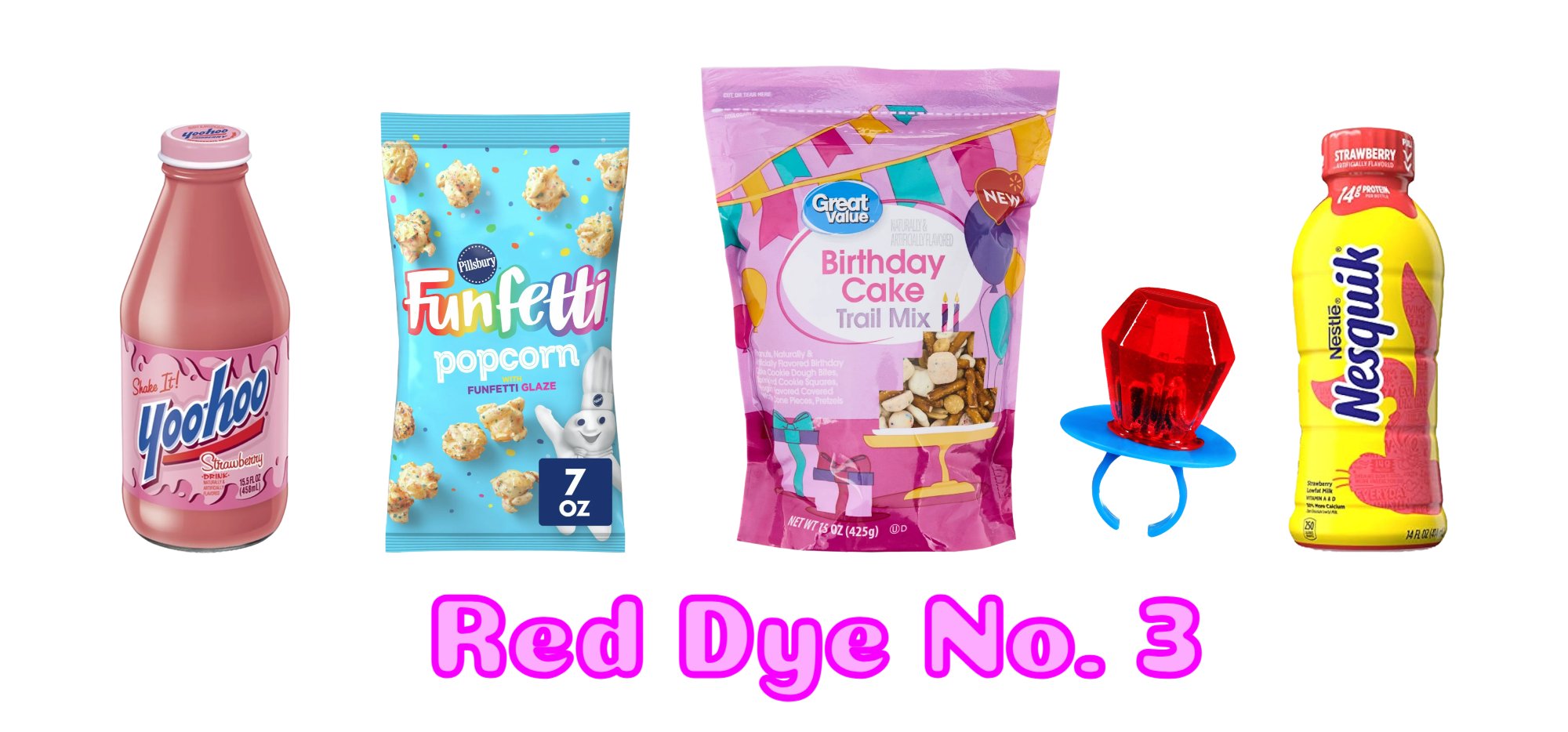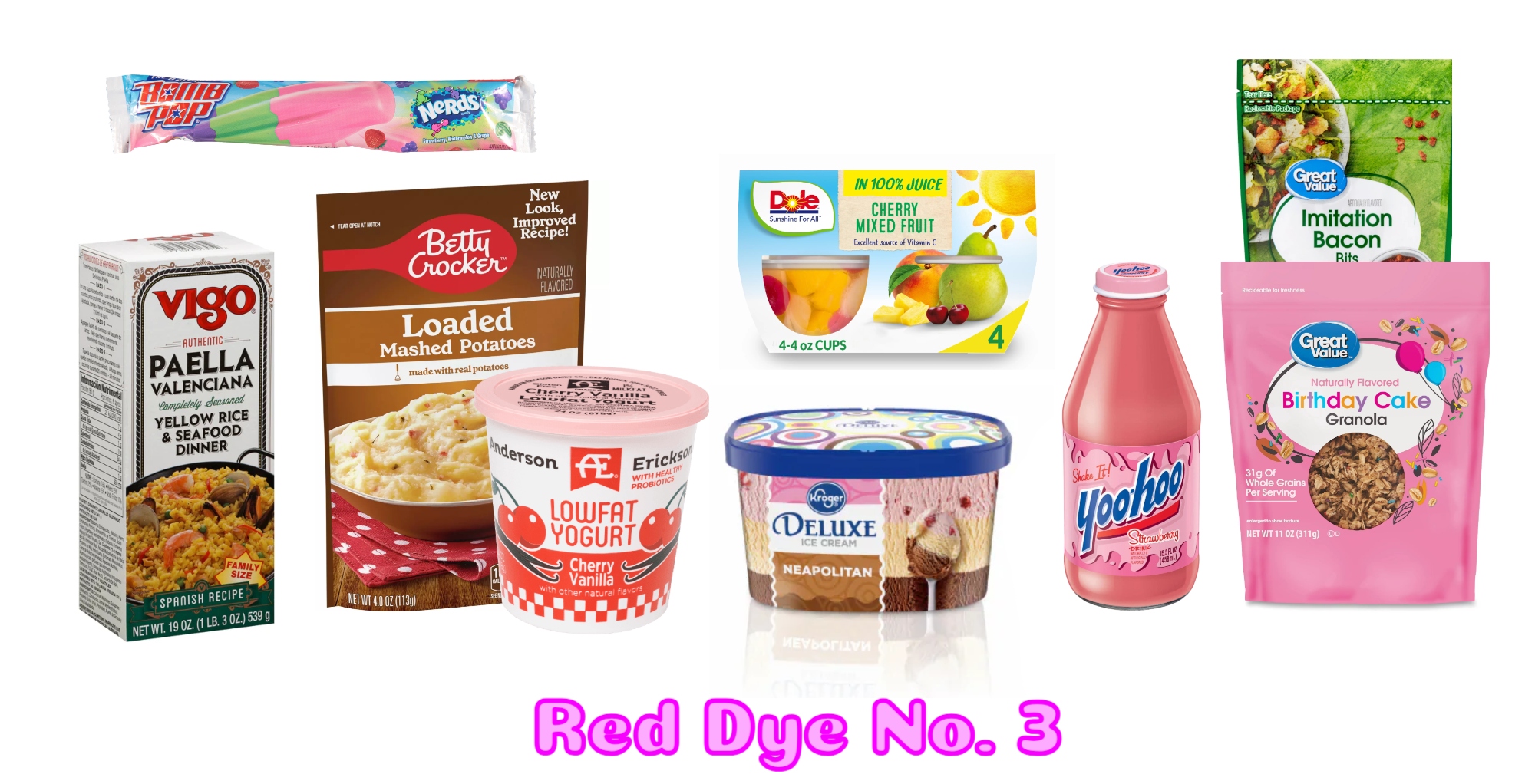
Last month, the FDA’s deputy commissioner said after a Senate hearing that they would finally ban red dye No. 3 from use in foods. It’s already banned in Europe, and in the States, it’s been banned from cosmetics since 1990. Right now, Red No. 3 is only banned in California, but ten other states, like New York and Illinois, are in the process of doing the same. Red Dye No. 3 is a synthetic food coloring that’s made from petroleum used in nearly 3,000 different food products including gummies, fruit cups, and certain candies. It’s particularly controversial because it’s been linked to cancer and behavior issues like hyperactivity and irritability. Food companies have until January 2027 to remove the dye from their foods. Drug makers will have until January 2028.
The U.S. Food and Drug Administration announced that it’s banning the controversial additive Red No. 3, a common food dye that appears in beverages, candy, snacks, and more.
“The FDA cannot authorize a food additive or color additive if it has been found to cause cancer in human or animals,” Jim Jones, the FDA’s deputy director for human foods, said in a statement, NBC News reports. “Evidence shows cancer in laboratory male rats exposed to high levels of FD&C Red No. 3.”
The ban comes two years after the Center for Science in Public Interest petitioned the government to remove the additive, citing the health risks. The petition also noted that in 1990, the FDA banned its inclusion in cosmetics because it was deemed “unsafe for use.”
However, it wasn’t banned from food because it “had already been permanently approved for use in food and ingested drugs.” The petition noted that the FDA said it would “take steps” to ban it, but at the time of the 2022 petition, “the agency has yet to delist FD&C Red No. 3 for these uses, and this carcinogen can still be found in foods, dietary supplements, and ingested drugs.”
“The FDA says it isn’t safe enough to put it on our cheeks, but it’s okay to put it in our mouths?” Lisa Lefferts, a scientist and consultant to Center for Science in the Public Interest, told the Washington Post.
In a statement announcing the ban, the agency wrote, “FDA determined that the data presented in a 2022 color additive petition show that this ingredient causes cancer in male laboratory rats exposed to high levels of FD&C Red No. 3.”
In its petition, CSPI noted that “there is widespread exposure to U.S. consumers, particularly children, and new information indicates that very young children have the highest exposures.” A search of for Red No. 3 — also called Red 3 or FD&C Red 3 — at the US Department of Agriculture’s site shows the ingredient in sprinkles, chips, milkshakes, candy, mini-muffins, and more packaged foods marketed to children.
Although parents claim Red No. 3 impacts children’s behavior — specifically, causing hyperactivity — in 2011 the FDA said a “casual relationship” could not be determined. However, for children who already had ADHD, that “condition may be exacerbated by exposure to a number of substances in food, including, but not limited to, synthetic color additives.”
However, in 2012, a study published in the National Library of Medicine said food dyes “seem to affect children regardless of whether or not they have ADHD.”
In 2023, California banned the ingredient — which is already banned in the European Union. Ten other states have since followed suit. As NBC News reports, food manufacturers have until Jan. 15, 2027 to adjust their products.
Well, it’s about time. I know that money and politics are the reason why it took this long, but it’s crazy that this ban is happening 35 years after Red No. 3 was deemed harmful to use in makeup. We could eat it but not put it on the outside of our bodies! It’s also wild that it’ll take a full two to three years for companies to “adjust” their ingredients to not include a harmful one that causes cancer. A lot of these foods are made with so many preservatives that they probably have a two-year supply all set to be sold. I presume that a lot of these companies already manufacture food for the European Union, so they already have dye-free formulas. Many commercial candies and foods have already made the switch to Red 40 and Red 40 Lake, but Red No. 3 is still used in products from Pillsbury, Nestle, and Ring Pop and Yoo-hoo. (Note that not all the products listed on this Self story still contain Red Dye No. 3. Entenmann’s, Brach’s and Goya seem to have removed it, based on a quick search on Walmart.com.) Is two years reasonable or does this deadline give companies too much time?
Photos credit: Ivan Babydov on Pexels and via Walmart













About time, after how many decades? They always knew it was suspect. They even put it in meat. Not all meat, but some meat. And what about tartrazine, yellow dye? Suspected of causing bladder cancer.
I hope Canada follows suit. I saw a program not long ago where they had kids do a blind taste test of some of the most popular snack foods (e.g Doritos, M&Ms) – both the ones from North America containing the artificial flavours and colours and those from Europe where they were made without. Overwhelming the kids preferred the European ones.
I hope the ridiculous people praising RFK Jr. for this find out with a quickness that it was the Democrats who did this, not that stone-faced idiot who is not even in office yet (and will focus mostly on making all vaccines a “body integrity” issue rather than a mandated public health issue. Remember, “body integrity” is a white man issue, not women’s (who don’t have “body integrity” regarding their reproductive system, nor Black people’s, who are shot or beaten by the police). So welcome back Polio, Measles and a whole host of other deadly diseases which had been eradicated by Science, but will now be stalking the Earth again, killing victims willy-nilly. What a wonderful country we are living in!